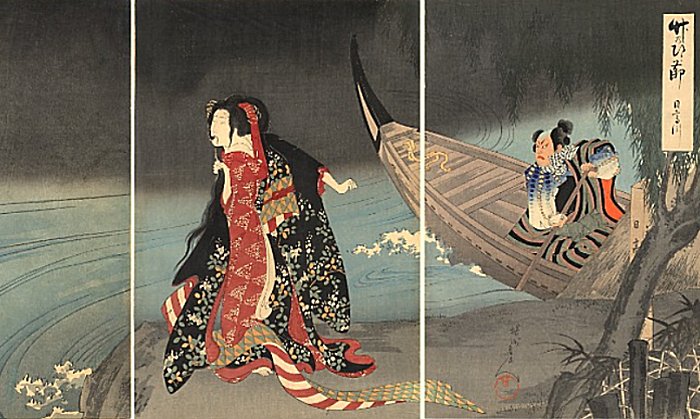Unveiling Yokai Kijo: From Cannibalistic Demons to Moral Warnings in Japanese Folklore
The narratives surrounding the mythical female demons, known as ‘kijo’, carry a profound moral lesson: women who engage in unethical or immoral conduct risk transforming into malevolent entities that feast on humans.
Kijo (or Kidjo) is a demoness, a cannibal woman usually wearing rags. In the beautiful beliefs of Japanese people, she is a yokai (“Yōkai”) like thousands of other yokai figures.
The younger ones are called “kijo” while the ones that look like old ladies are called onibaba (“demon hag”). Kijo is usually huge but sometimes can be small. They are ugly; their appearance may vary; some of these monsters have (red or yellow eyes, blue skin, sharp horns, long claws, and dirty, matted hair.
These entities possess the extraordinary ability to shapeshift into alternative humanoid forms. As beautiful young ladies, they can be very dangerous trying to charm men. They also exhibit an insatiable craving for human flesh, which can be classified as an addiction. These beings are endowed with various supernatural characteristics that defy conventional understanding.
What did happen to these women?
Vengeful women turn into demons. According to Japanese folk tradition, women who have been betrayed by their husbands or abused or mistreated girls and grandmothers can turn into demons or monsters.

However, the term ‘kijo’ predominantly refers to females who have undergone a metamorphosis from human beings into monstrous entities, either as a consequence of committing terrible crimes, succumbing to uncontrollable and perilous jealousy, or harboring intense hatred and malice.
Such highly negative feelings and actions influenced by them undoubtedly corrupt the pure soul. These individuals, having forsaken the rules of polite society, sought refuge in isolated dwellings such as abandoned residences or secluded mountain caverns or even made use of wandering along desolate roads under the veil of darkness.
This yokai’s only goal is to continue committing evil deeds. Extremely powerful and dangerous, Kijo demonesses are skilled in the secrets of magic. They are highly capable of casting spells and brewing deadly poisons and potions.
Kijos do not act in groups. Instead, they prefer to act alone and are often driven by personal motives. Japanese legends say that they act either as persecutors of sinners in the underworld or as a threat to human society in the human world.
A particular moral lesson dominates in all stories about the Kijo demoness. It says that women who do bad things can become evil creatures, and men who follow them and succumb to their charm may ruin their lives or encounter their ultimate demise.
There are countless legends of Kijo female monsters in Japanese folklore. Most of them, however, were not created to scare people but as entertainment, warnings, or moral reminders.
Generally, ‘Kijo’ can be defined as a designation for any demonic or supernatural entity of the feminine gender with malevolent or otherworldly characteristics that can be found within various cultural traditions.
One of the most famous legends of Kijo demons in Japanese folklore is the tale of Kiyohime. According to this ancient narrative, Kiyohime was the daughter of Shaji, the respected leader of a village. Their family was popular and respected for extending hospitality to travelers passing through their community.
Kiyohime And Unreturned Love
The tale of Kiyohime and Monk Anchin explores the complexities of unreturned love.

Kiyohime, a village maiden, fell in love with a monk, Anchin, who once visited her village. The monk responded to Kiyohime’s affections, but it was more on an aesthetic level, admiring her beauty.
Unfortunately, he did not want to pursue a deeper, more passionate connection with the girl. Driven by her intense emotions, Kiyohime decided to pursue the monk, which finally caused a tragic end.
Legend says that the monk escaped to the banks of the Hidaka River, begging the sailors to refrain from helping the girl cross the river. Kiyohime did not want to give up her pursuit. Consumed by her wrath, she decided to swim across the river herself. As she entered the currents, something extraordinary happened. Her fury manifested in a remarkable transformation, causing Kiyohime to assume the form of a serpent.
The monk Anchin saw this and took refuge in a temple, asking the temple to hide him in a bell. It did not help much. Kiyohime followed him and found the bell. Spitting fire through her mouth, she melted the bell and killed the monk. Kiyohime is considered a snake woman who kidnaps men in villages.




